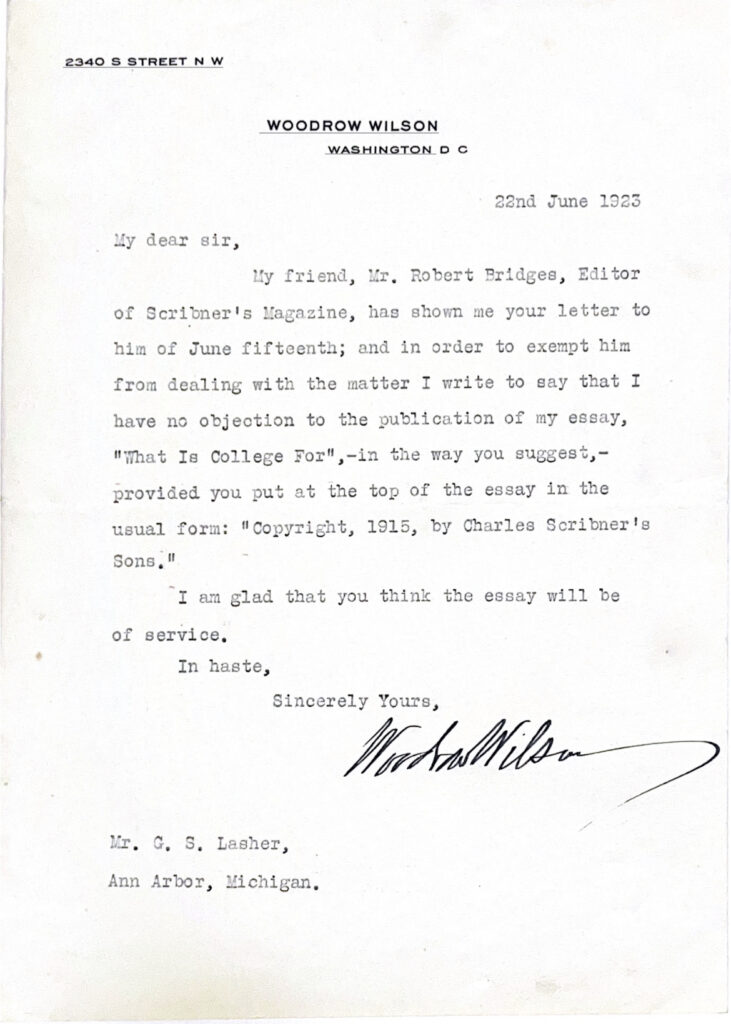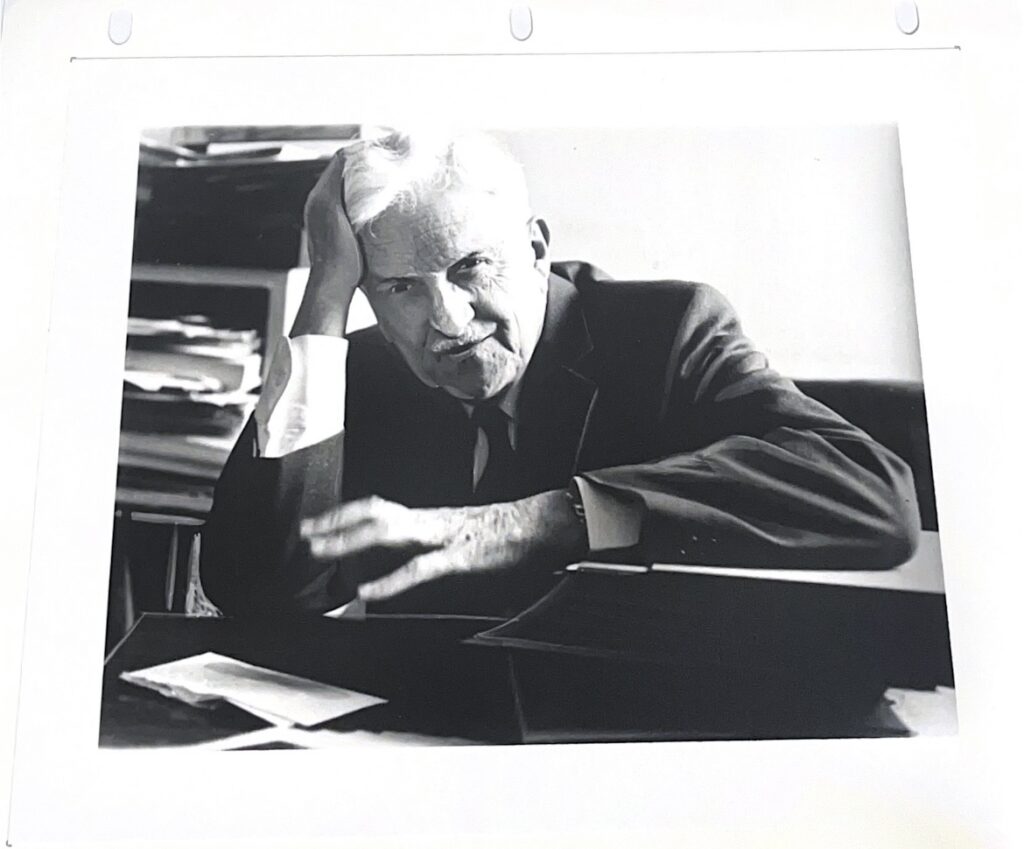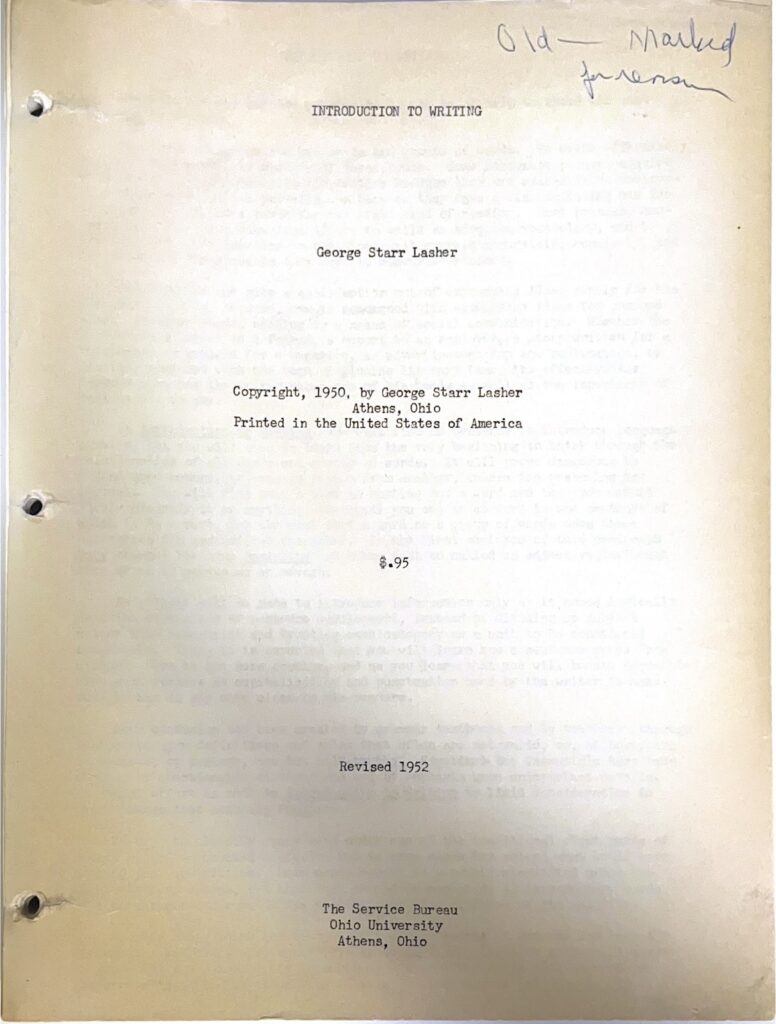By Taylor Payne ’26, English Creative Writing major
In the Fall of 2024, I began my internship with the Mahn Center, with Ohio University Archivist Bill Kimok as my supervisor and mentor. In my first week, I was tasked with completing theoretical readings on archival work and all that it entails, including organization and preservation of historical documents. This process gave me the foundation necessary to begin the processing work that I would be fully immersed in for the next two weeks of my work in the archives.
When I began processing the George Starr Lasher (GSL) collection, I was handed a box crammed full of photographs, letters, essays, textbooks, and assorted other materials. Bill reached into a filing cabinet, handed me a staple remover and two dozen acid-neutral folders, and told me to get started. With this daunting task in front of me, I started with the basics; unbinding and salvaging Lasher’s textbooks, of which there were many. At the end of my second day of my second week, I felt that I had finally accomplished a real, tangible archival task, which prepared me for the more complicated work of sorting through Lasher’s papers. What I began to do was skim, and often fully engage with, the writings of Lasher in order to categorize the papers appropriately. I found particular joy in reading and sorting through Lasher’s personal, professional, and political correspondence, as these documents revealed a critical window into who Lasher was.
From these letters, I learned that Lasher not only founded and directed the Ohio University School of Journalism, but that he was also heavily involved and concerned with mentoring the individual students who passed through his classrooms. In numerous letters, he inquired about opportunities for his students, often arranging personal and professional meetings between the students and important news outlets. In his political letters, he often urged politicians to pass legislation that would put education at the forefront of governing priorities, with a concern for encouraging free press and free speech. Much of Lasher’s correspondence, no matter the topic, were laced with themes of higher education and the capabilities of his journalism students. I organized the letters into three categories: personal, professional, and political. Then I organized each of those groups in chronological order, thereby creating a true historical narrative. This was especially important for the political letters, as they concerned time-sensitive matters, where even the month, and sometimes the days, mattered.
After processing the letters, I dove into what I believe to be the most important facet of this collection, which are the numerous newspaper and journal clippings. Lasher began his career running the Kalamazoo, Michigan Gazette, and articles from his time there as a reporter are present in this collection. Lasher eventually transferred his journalism skills and experience to higher education in 1924, when he founded the E.W. Scripps School of Journalism at Ohio University.
I organized a large number of articles related to the founding of the Scripps program, as well as articles written by Lasher himself from his time as a journalist and key member of the Ohio University Press. Processing these clippings took significantly longer than any other aspect of the work, as I had to determine where each article belonged categorically. I ended up organizing the clippings by articles written about Lasher, articles written about Lasher’s death, and posthumous articles. I then went through the remaining clippings and organized them into three categories: articles written by Lasher himself; political clippings; and personal miscellaneous clippings. Although these last few categories may appear to be less tangible than the others, I found that they provide personal context for the values that Lasher held in both his personal and professional life.
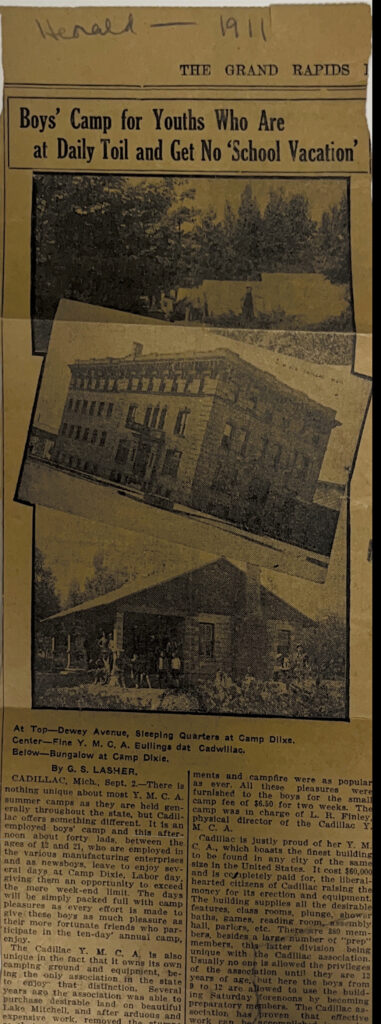
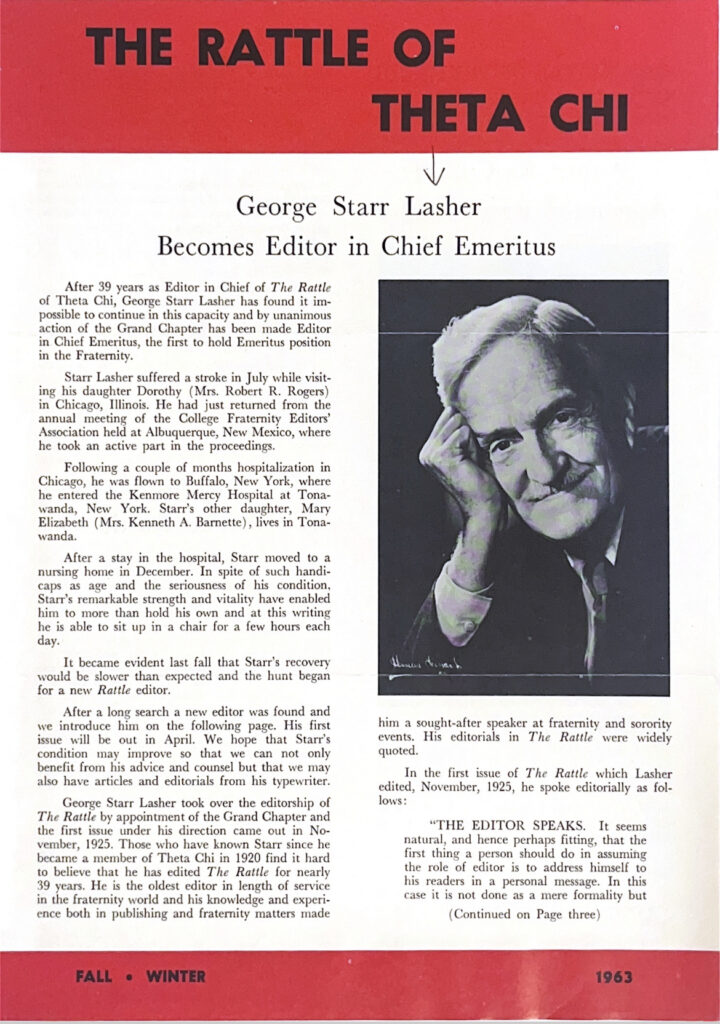
The remainder of the collection included photos and various documents concerning the George Starr Lasher Living Legacy program, which included scholarships and events all dedicated to the late professor. These documents provided a space for his memory, while also mourning his loss not only to his family and friends, but to Ohio University and its community of students, faculty, and alum. Included in these folders are speeches, guest lists, and articles relating to the GSL Living Legacy program. These materials help to provide an important overview of the program and all that it entailed for the University as well as for Lasher’s family.
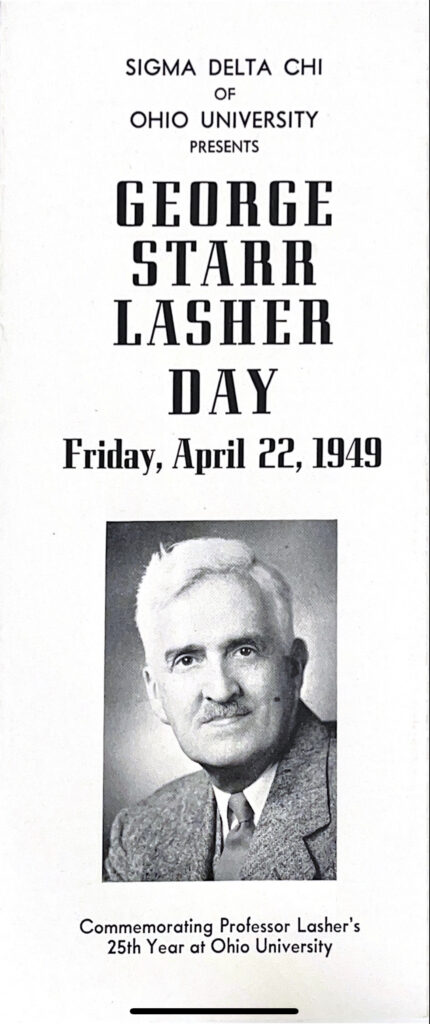
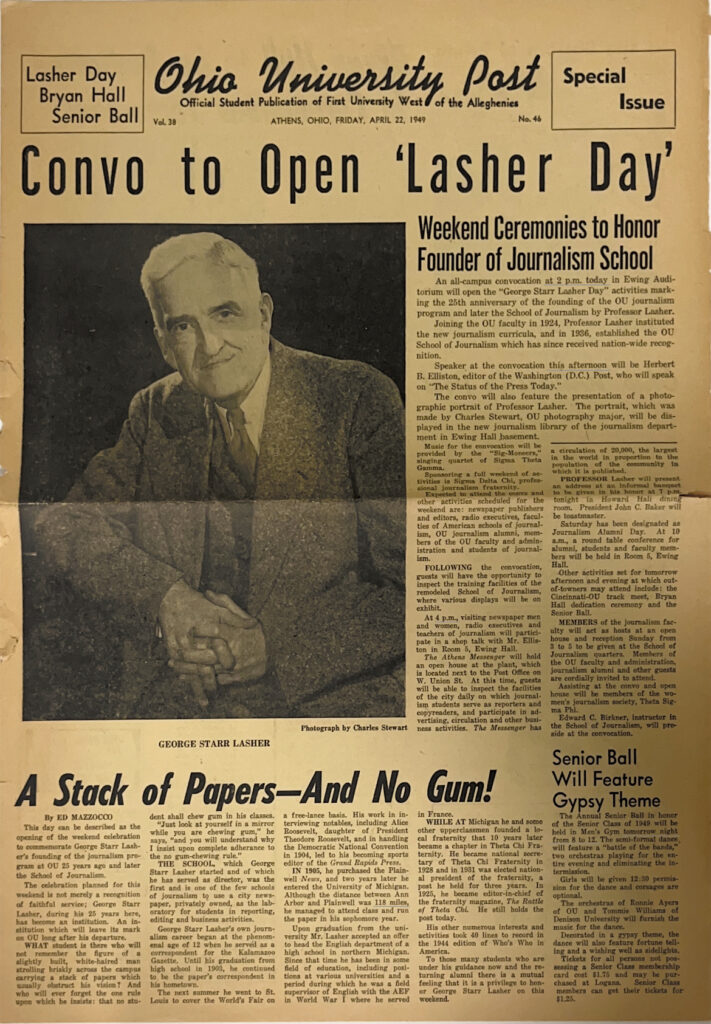
Processing this collection has been one of the most rewarding experiences I’ve had as a college student. With my background being in English literature and creative writing, working closely with a collection so concerned with writing and what it means to write with integrity has been so special to me. What Lasher’s legacy represents to me is one of commitment and passion for education and writing, and I am so glad to have been even a small part of preserving this legacy.
